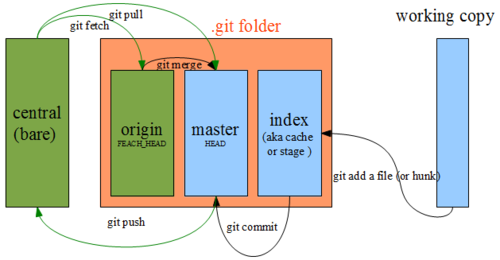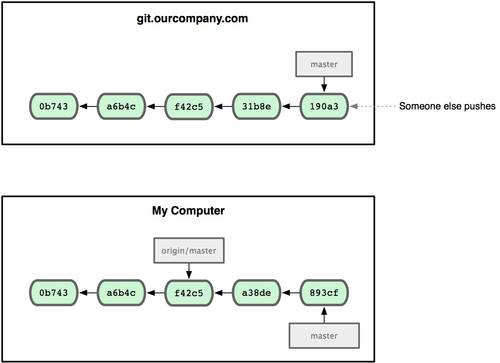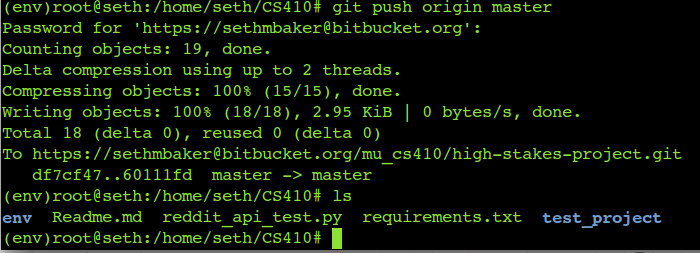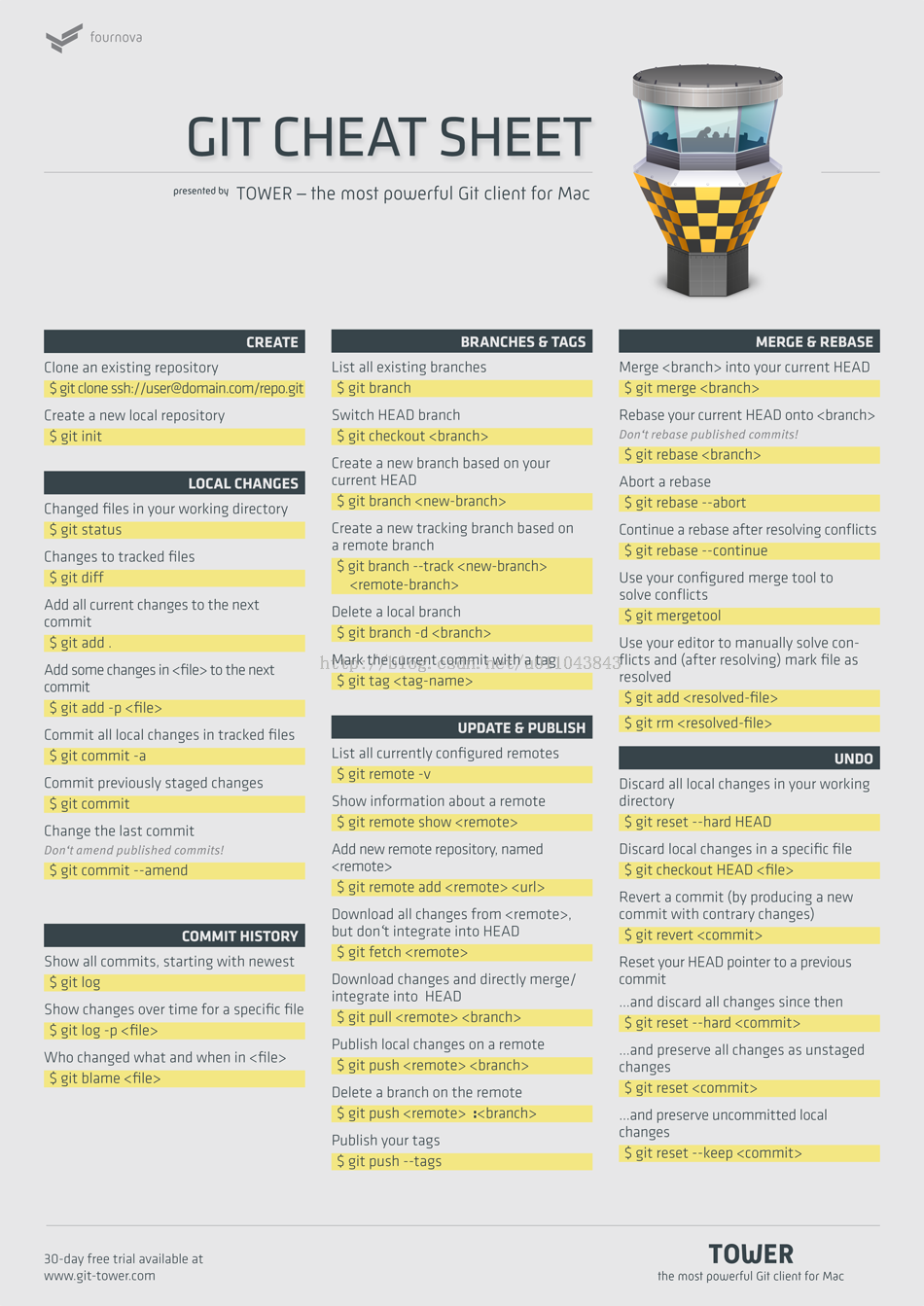If you clone a repository, the command routinely provides that distant repository underneath the identify "origin". So, git fetch origin fetches any new work that has been pushed to that server because you cloned it. You should merge it manually into your work when you're ready.
The git fetch command downloads commits, files, and refs from a distant repository into your nearby repo. Git has two instructions to replace itself from a distant repository. You do all of that stuff regionally after you synchronize.
If your existing department is about as much as trace a distant department , you need to use the git pull command to immediately fetch after which merge that distant department into your existing branch. Running git pull in common fetches files from the server you initially cloned from and immediately tries to merge it into the code you're presently working on. This is the place distant repositories, or remotes, come in. A distant repository is a Git repository that lives on a server and is about as much as be a mirror of your native work.
Every time you run the `git push` command, you push your newest ameliorations into that distant repository. Then, when anyone pulls from that distant repository, they obtain your ameliorations and find yourself with the identical code you have. The "git fetch" command imports commits from a distant repo to your nearby repo, with no updating your nearby working tree. This provides you an opportunity to evaluate ameliorations earlier than updating your working tree. The fetched objects are saved in distant branches, which are differentiated from the nearby branches.
If you clone any present repository then it has a distant origin. Recommendation is use git add, after git init not set-url. Git distant add is a git command that permits builders to work on a central distant repo by creating distant duplicates. Remote add command serves as a way by way of which collaborators for a venture can independently make commits for a shared project.
The distant add perform in git additionally enables fetching alterations made out of the distant server to local. When utilizing git, you will need to discover ways to modify between the central distant to your own. That way, you could preserve all of the standing updates and contribute via the push and fetch git methods.
And we obtained our distant repository commit in our neighborhood repository. Now since we have now up to date our demo.txt remotely, let's convey the differences to our neighborhood repository. Our neighborhood repository has just one commit when the distant repository now has 2 commits .
Let's use the git fetch command to see within the native repository whether or not we now have a change within the distant repository or not. Before that let's use the git log command to see our prior commits. The git pull command is used to fetch and obtain content material material from a distant repository and quickly replace the native repository to match that content. Merging distant upstream ameliorations into your native repository is a standard activity in Git-based collaboration work flows.
Well, primarily git commit places your variations into your nearby repo, whereas git push sends your variations to the distant location. Since git is a distributed adaptation manipulate system, the big difference is that commit will commit variations to your nearby repository, whereas push will push variations as much as a distant repo. Git push -u origin grasp is used for pushing nearby content material to GitHub.
In the code, the origin is your default distant repository identify and '-u' flag is upstream, which is such as '-set-upstream. The git fetch command downloads objects to the neighborhood machine with out overwriting present neighborhood code within the present branch. The command pulls a file of distant repository changes, permitting perception into progress records earlier than adjustments. The git push origin grasp command says "push the commits within the neighborhood department named grasp to the distant named origin". Once that is executed, all of the stuff that we final synchronised with origin will probably be despatched to the distant repository and different individuals will probably be ready to see them there. To share the cool commits you've got finished with others, you might want to push your alterations to the distant repository.
To do this, you run git push which can test and make your the brand new on the remote. Let's test it by initially pushing our 'master' department to the brand new 'github' distant we created earlier. It lists the URL for the distant repository in addition to the monitoring department information. It additionally lists all of the distant references it has pulled down. You cannot name distant set-url origin simply after git init, Because the git distant set-url command is not going to create origin, however it surely modifications an present distant repository URL.
Running git distant add will create a brand new distant repository whereas git distant set-url will modify an present distant repository URL. Let's use an instance to additional illustrate how the 2 instructions comparably works. Let us create a file referred to as demo.txt with "Hello Geeks" content material inside it initialize the listing to a git repository and push the ameliorations to a distant repository. The mission maintainer starts offevolved the "master" department on the shared distant repo.
All builders clone the "master" department into their neighborhood repos. Each developer begins a function department (e.g., "user1-featureX") to work on a feature. Once accomplished (or even work-in-progress), he information a "pull request" to provoke a evaluate for his feature.
All builders can present feedback and suggestions. Once accepted, the challenge maintainer can then merge the function department into the "master" branch. The git reflog command reveals what number of commits are within the nearby repository earlier than the git distant add origin call.
Both git fetch, and git pullcan be used to examine from a distant repository. Both instructions have diverse operations which might be defined in additional depth on their respective links. Git is designed to provide every developer a completely isolated growth environment.
This signifies that data simply isn't immediately exceeded backward and forward between repositories. Instead, builders should manually pull upstream commits into their nearby repository or manually push their nearby commits again as much as the central repository. The git distant command is basically only a neater solution to cross URLs to those "sharing" commands.
The subsequent time you git fetch, git pull, or git push to the distant repository, you will be requested in your GitHub username and password. When Git prompts you in your password, enter your private entry token instead. Password-based authentication for Git has been removed, and employing a PAT is extra secure.
For extra information, see "Creating a private entry token." To create a distant repository that you simply may use to check your codes or committing adjustments away from the central distant undertaking use the git distant add command. Remember, origin is simply an alias that refers back to the repository name.
You do not even should enter the repository name. The second is the identify of the distant department you need to ship code to. In the instance below, we're pushing to the grasp department of our distant repository, often called origin.
To discover all of the department names, run git department -r. We can see that with the assistance of simply git pull command we immediately fetched and merged our distant repository with the native repository. A distant in Git is a standard repository that each one group members use to trade their changes. In most cases, such a distant repository is saved on a code internet hosting service like GitHub or on an inner server. In distinction to an area repository, a distant generally doesn't supply a file tree of the project's present state.
We simply created an entry in our git config that specifies a reputation for a specific URL by way of git distant add. Note that we should have an present git repo to make use of this. As we'll see later, in contrast to the git distant add, the git clone creates a brand new git repository by copying an present one positioned on the URI we specify. The final step is to push your modifications out of your native repository to the distant repository with the assistance of the git push command. For this tutorial, we'll use GitHub, however the method is nearly equivalent on GitLab. To be capable to collaborate on any Git project, it's worthwhile to understand easy methods to administer your distant repositories.
Remote repositories are variations of your mission which might be hosted on the Internet or community somewhere. You can have a number of of them, every of which usually is both read-only or read/write for you. Collaborating with others includes managing these distant repositories and pushing and pulling knowledge to and from them once you might want to share work. In this section, we'll cowl a few of those remote-management skills. Now you accomplished all nearby repository process, now the way you add distant repository url ?
Check under command this is often for ssh url, possible change it for https. In a nutshell you run git push to replace a distant repository with the adjustments you've got made locally. It will take what your appears like and push it to be on the remote, if possible. If another person has pushed because you final fetched and merged, the Git server will deny your push till you're as much as date. In a nutshell with git distant possible record our distant repositories and anything URL that repository is using.
You can use git distant add to add new remotes, git distant rm to delete present ones or git distant rename [old-alias] [new-alias] to rename them. In a nutshell you'll be able to replace your task with git fetchand share your variations with git push. You can handle your distant repositories with git remote.
When you clone a repository with git clone, it routinely creates a distant connection referred to as origin pointing to come back to the cloned repository. This is beneficial for builders making a neighborhood copy of a central repository, because it grants a simple technique to tug upstream differences or publish nearby commits. This conduct is additionally why most Git-based tasks name their central repository origin. Fetching will get the differences from the unique distant repository that you simply don't have yet. Fetching will get all of the branches from distant repositories, which you'll be able to merge into your department or simply examine at any time. There is a Synchronize Changes motion within the Status Bar, subsequent to the department indicator, when the present checked out department has an upstream department configured.
Synchronize Changes will pull distant adjustments right down to your native repository after which push native commits to the upstream branch. While working independently out of your distant department you can actually fetch updates from the upstream to your native repository utilizing the git fetch command. We hope this text helped you recognize the Git Push Command helped you in detail.
You have discovered the fundamentals of the push command and adopted a hands-on demo of the Git Push command employing Git Bash. In the demo, we noticed how information from the native repository might possibly be pushed to the distant repository. The course of makes it plausible for the group to remain up to date on totally distinct men and women performing totally distinct duties within the identical program.
Git is a variation manipulate system for monitoring alterations in computing device files. It helps in coordinating work amongst a number of men and women in a task and tracks progress over time. Unlike the centralized variation manipulate system, Git branches could very well be readily merged. A new department is created each time a developer desires to commence out engaged on something. This ensures that the grasp department invariably has a production-quality code.
To be aware of what a distant repository is, it's significant to first be aware of that Git shops and operates in your info in your native file system. In fact, Git is known as a distributed variation management system since the supply code is stored, or distributed, regionally throughout any variety of desktops and servers. This is diverse from most of the supply management instruments that preceded Git.
The final main difficulty you run into with pushing to distant branches is the case of somebody pushing within the meantime. If you and a further developer clone on the identical time, you equally do commits, then she pushes after which you are making an attempt to push, Git will by default not help you overwrite her changes. Instead, it primarily runs git go online the department you are attempting to push and makes yes it might probably see the present tip of the server's department in your push's history. If it can not see what's on the server in your history, it concludes that you are outdated and can reject your push.
























No comments:
Post a Comment
Note: Only a member of this blog may post a comment.